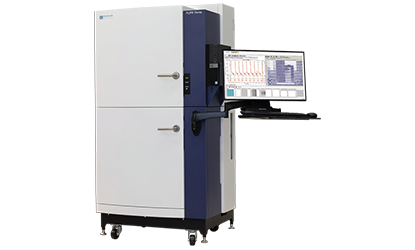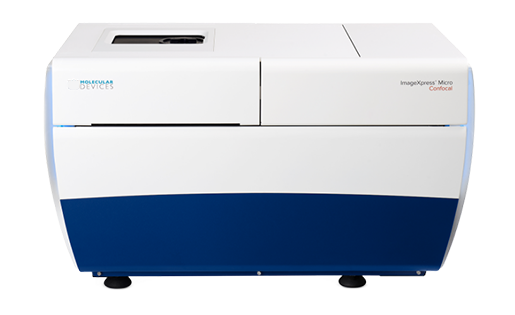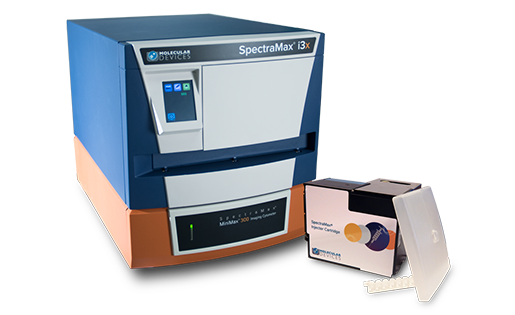Stemonix
企業/大学
Stemonix
使用製品
FLIPR Tetraハイスループットカイネティックセルベースアッセイシステム
ImageXpress Micro Confocalハイコンテントイメージングシステム
SpectraMax i3xマルチモードマイクロプレートリーダー
課題
神経科学の研究者が利用できる現在のモデルには限界があり、新薬の開発を妨げている。死後脳や動物モデルのような複雑なモデルは、ヒトの脳の複雑性をより忠実に捉えている。しかし、死後のヒトの脳は入手が困難であり、疾患の最終段階を表しているに過ぎない。さらに、動物モデルはヒトの脳の特徴や機能を完全には再現できない可能性があり、このようなアッセイを臨床応用することを困難にしている。単純なセル培養系に基づくin vitroモデルは、スケールアップが容易である反面、ヒトの脳の複雑な組織や構造を欠いている。ヒト人工多能性幹細胞(hiPSC)由来の脳オルガノイドは非常に有望なツールであるが、依然としてばらつきが大きく、表現型を評価するための機能的アッセイも不足している。神経科学分野では、神経系疾患の治療薬を開発するために、試験管内でヒトの脳の発生と機能の均一性を高度に捕捉できるモデルが不足していた。

解決策
StemoniX®の科学者たちは、microBrain® 3Dプラットフォームを開発することで、このギャップに取り組みました。hiPSC由来の神経前駆細胞を用いて、ヒトの大脳皮質により近い、均一性の高い3D神経皮質スフェロイドを作製した。このプラットフォームは、成熟した神経細胞とアストロサイトで構成されており、初代神経培養と同様に活動的で、神経調節物質に反応する。さらに、FLIPR Tetra® ハイスループット細胞スクリーニングシステムやImageXpress® Micro Confocalハイコンテントイメージングシステム(いずれもモレキュラーデバイス製)などのハイコンテントスクリーニングシステムと組み合わせて使用できるよう、96ウェルおよび384ウェルフォーマットでプラットフォームを設計し、in vitroでのヒト脳機能生理学の均一性評価を可能にした。
使用製品
-

-

ImageXpress Micro Confocal ハイコンテントイメージングシステム
ImageXpress®Micro Confocal ハイコンテントイメージングシステムは、スピード、感度、柔軟性を兼ね備えた究極のシステムで、研究の可能性を広げます。生物全体、厚い組織、3Dスフェロイドアッセイ、細胞や細胞内イベントの高画質画像をキャプチャします。ImageXpress®Micro Confocal システムは、MetaXpress®ハイコンテント画像取得・解析ソフトウェアと組み合わせることで、次の画期的な科学的ブレークスルーを発見するための完全な多次元・ハイスループットスクリーニングソリューションを提供します。
-

結果
StemoniX microBrain 3Dプラットフォームは、96および384ウェルフォーマットの均一性3D神経スフェロイドシステムです。ImageXpress®Micro Confocal システムを明視野キャプチャおよび自動サイズ測定に使用することで、個々のプレートにおける典型的な変動係数が4%未満である、高度に均一なサイズ分布が観察された。ImageXpress顕微鏡を用いた免疫蛍光分析により、これらの3Dスフェロイドは、シナプスタンパク質などの細胞成熟の主要マーカーを示す皮質ニューロンとアストロサイトから構成されていることが明らかになった。さらに、これらのスフェロイドは自発的で同期したカルシウムオシレーションを示し、FLIPRとImageXpressシステムの両方で容易に検出できた。microBrain 3Dプラットフォームの機能的成熟度は、作用機序が知られている神経調節物質パネルを調べることで確認された。FLIPRシステムを用いて、これらの化合物の期待される活性と相関する神経活動の調節が検出され、スフェロイドが機能的なグルタミン酸作動性回路とGABA作動性回路を有することが確認された。
最後に、ジカウイルス感染に対して異なる効力を持つ化合物の標的ライブラリーを、毒性学的ケーススタディでテストした。まず、SpectraMax® i3x マルチモードマイクロプレートリーダー(モレキュラーデバイス)を用いて、microBrain 3Dプラットフォーム上でこの化合物ライブラリーの細胞毒性を調べた。細胞毒性解析は、次にFLIPRシステムを用いてハイスループットで調べた機能毒性で補った。最後に、ImageXpress共焦点顕微鏡を用いて、各処理後のカルシウムオシレーションの高解像度ビデオを作成した。総じて、microBrain 3Dを複数のプラットフォームに統合することで、標的ライブラリーの毒性学的プロファイルの広範な特性評価が可能となり、複雑な神経表現型、毒性学的プロファイル、および薬剤スクリーニングのin vitro調査にこのプラットフォームを統合することの実現可能性が示された。


